It is estimated that over 7 million Americans are affected by psoriasis. While many forms of this disease have been discovered, plaque one is the most common of them.
This disease looks like discolored patches usually covered by whitish dead skin cells known as scales and can affect any part of the skin and nails.
Contents
Causes and Types of Psoriasis
While doctors are not yet sure why exactly people get this disease, it is thought to be triggered by your immune system. In one word, it is an autoimmune disease. This means that your immune system mistakenly attacks healthy cells, confusing them with infectious cells.
As a result, your body starts making new cells at a faster pace than normal, leading to overproduction and a thick, silvery build-up. Also, your chances of getting psoriasis are subject to your personal medical history and that of your family. Trauma and stress are considered to be the main reasons behind its onset.
The following are 5 common types:
1. Psoriasis Vulgaris
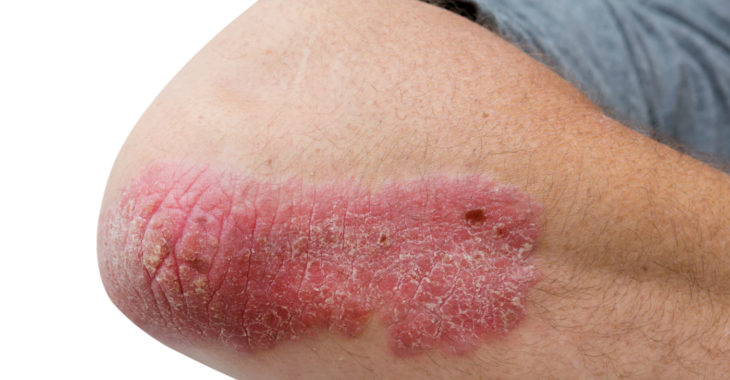
Source: Australian Pharmacist
The word Vulgaris means “common” and rightly so as this is the most common type (also known as plaque psoriasis). It affects over 80% of the individuals suffering from it. It is characterized by well-defined areas of raised, red skin. On top of these plaques, you will see a flaky, silver-white dead skin buildup. You will often find that this scale loosens and sheds.
2. Guttate Psoriasis
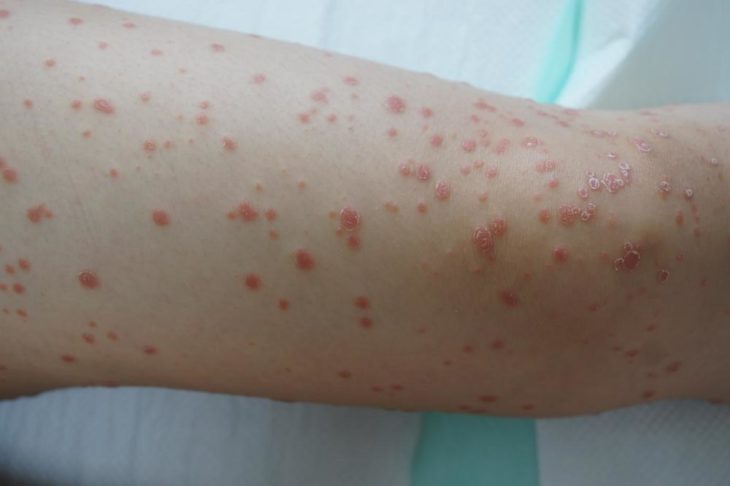
Source: Prosoria
In the case of guttate psoriasis, you have small, round, salmon-pink-colored spots on your skin. They affect over 10% of the people suffering from it. On top of these drops, you usually see a fine scale-lesion or silver-white buildup. This build-up is finer than the scale you see in the case of plaque.
The most common cause of a flare-up in this type is a streptococcal (bacterial) infection. Following a bout of strep throat for 2 to 3 weeks, your lesions may erupt significantly. Fortunately, these lesions usually go away.
3. Inverse Psoriasis
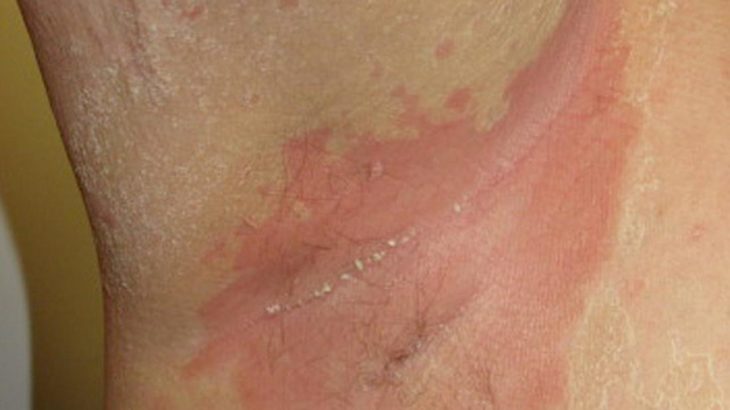
Source: Inverse Psoriasis
Also knows Intertriginous Psoriasis, appears as red lesions typically in between skin folds. Among the most common skin areas where you can find it is under the breasts, near the genitals, in abdominal folds, in the armpits, and under the buttocks. The primary reason behind the flare-up of inverse psoriasis is sweat and skin rubbing together, which lead to irritated and inflamed areas.
4. Pustular Psoriasis
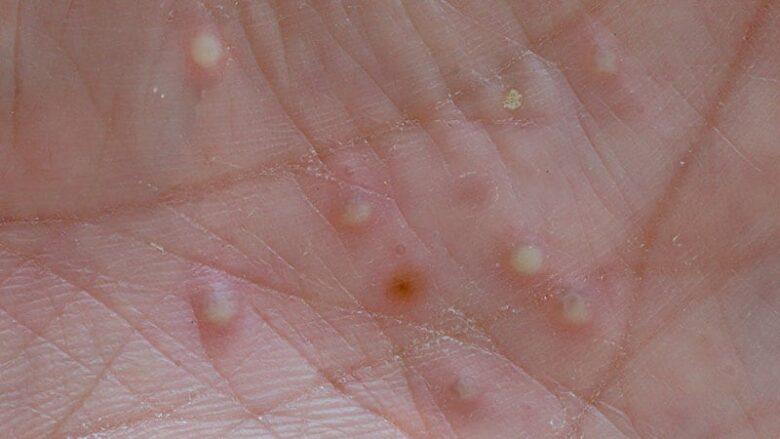
Source: medium.com
If you can see well-defined white pustules anywhere on your skin, this could be a case of pustular psoriasis. These pustules are full of non-infectious pus. You will also see redskin around these bumps, which spread across a large portion of the skin.
In fact, in most cases, you may see a cycle of complete redness of the skin, which is usually followed by pustules and scaling.
5. Erythrodermic Psoriasis
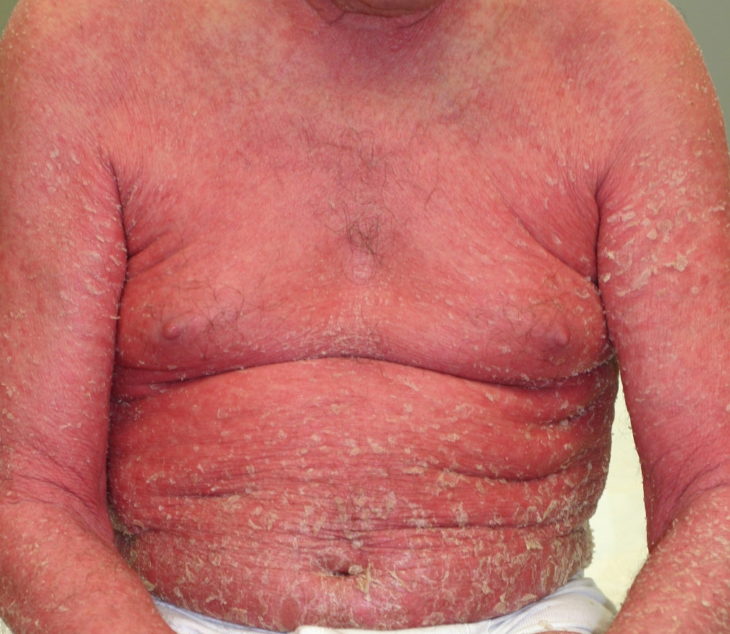
Source: eScholarship.org
While erythrodermic psoriasis is quite a rare form, it may be extremely dangerous in some cases. Erythrodermic one can also affect most of your body’s surface, leading to the bright red skin. In this type of scenario, you experience a red, peeling rash that itches as well as burns. It leads to drying out of the skin and leaves you vulnerable to bacterial infections like Pneumonia and Staphylococcal septicemia. There is a 10% to 65% mortality rate associated with it as well.
Cure
There is no specific treatment, but you can visit here for more info. Based on the severity of your condition, the disease can go into remission, leaving behind no symptoms or signs. Medical researchers are continuously working to find a treatment and a potential cure. However, there is an array of treatment options that you can try out.
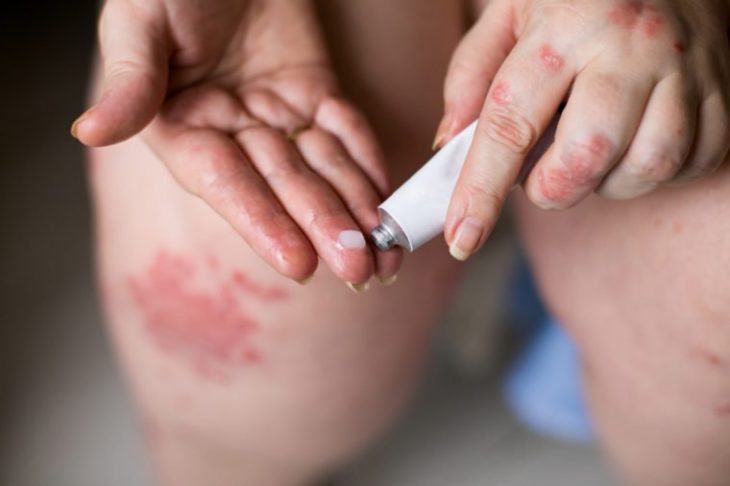
Source: The Healthy
Contagiousness
Psoriasis is not contagious and cannot be caught from others through physical or sexual contact. However, parents are likely to pass it on to their biological children, usually runs in families for generations.
Conclusion
Psoriasis is a skin-related autoimmune disease. It can cause immense discomfort and prove it be interference in the daily routine. There are psychological issues associated with as well (depression, anxiety, low self-esteem, etc.), which highlights the need for public awareness.
